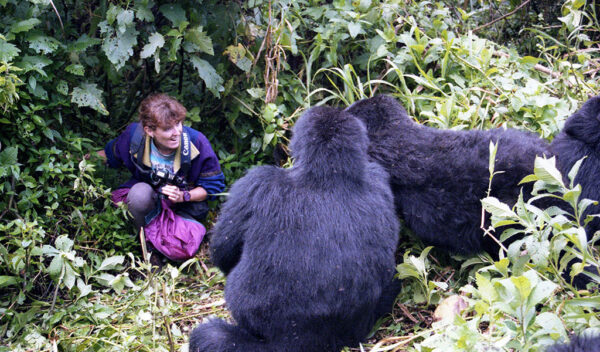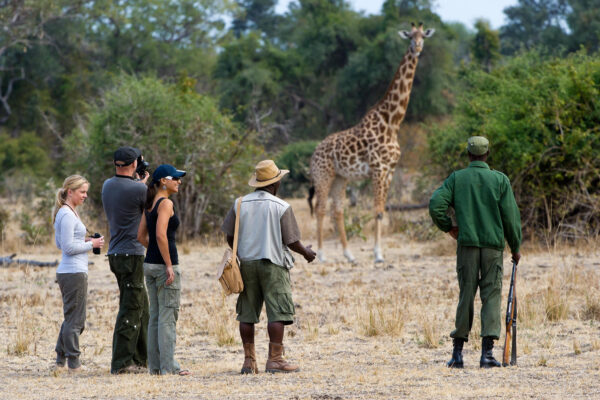How Much Does a Chimpanzee Tracking Permit Cost?
November 19, 2025
How Long Does a Walking Safari in Uganda Usually Take?
November 20, 2025How Many Wildebeests Participate in the Great Migration?
Many travelers ask, “How many wildebeests participate in the Great Migration?” The Great Migration is considered one of the most extraordinary wildlife spectacles on Earth, spanning the savannahs of Kenya and Tanzania. This massive annual movement involves millions of wildebeests, zebras, and gazelles, creating dramatic scenes of predator-prey interactions that define the essence of Kenya Safaris and Tanzania Safaris.
Introduction: Understanding the Magnitude of the Great Migration
Renai Safaris specializes in designing immersive itineraries that allow travelers to experience this natural phenomenon while integrating other incredible wildlife and cultural experiences. Guests can combine Rwanda Gorilla Trekking Safaris or Uganda Gorilla Trekking Safaris with Kenya and Tanzania wildlife adventures to enjoy a multi-country East African safari. Understanding the number of wildebeests participating provides insight into the scale, timing, and planning required to witness this incredible migration, enhancing both anticipation and preparation for the journey.
The question How many wildebeests participate in the Great Migration? is not just about numbers; it’s about comprehending the rhythm of East Africa’s ecosystem. The migration is a cyclical journey influenced by rainfall patterns, availability of grazing land, and the interconnected behavior of predators and prey. Millions of wildebeests, accompanied by zebras and gazelles, traverse the plains in search of fresh grass, creating a moving ecosystem that draws wildlife enthusiasts, photographers, and researchers from across the globe. For those combining Tanzania Wildlife Safaris with Kenya Wildlife Safaris, the scale of the migration adds a sense of awe that complements primate trekking and birding adventures in neighboring countries.
The Numbers Behind the Great Migration
When considering “How many wildebeests participate in the Great Migration?”, it’s estimated that over 1.5 million wildebeests are involved, accompanied by approximately 200,000 zebras and 500,000 Thomson’s gazelles. These staggering numbers highlight why the Great Migration is often referred to as the world’s largest terrestrial mammal movement. The herds stretch for kilometers across the plains, creating a living, breathing spectacle that defines both Kenya Great Migration and Tanzania Great Migration experiences.
The migration occurs throughout the year, moving between the Serengeti National Park in Tanzania and the Maasai Mara National Reserve in Kenya. Understanding these numbers helps travelers plan their Kenya Wildlife Safaris and Tanzania Wildlife Safaris effectively, maximizing the likelihood of witnessing dramatic river crossings, predator interactions, and large-scale herd dynamics. Combining these safaris with Rwanda Gorilla Trekking Safaris or Uganda Gorilla Trekking Safaris offers a contrasting yet complementary wildlife experience, blending open savannah encounters with intimate forest-based primate treks.
Renai Safaris ensures that travelers not only witness the spectacle but also understand the ecological significance behind it. By contextualizing the numbers, guests appreciate how these millions of wildebeests impact vegetation, water sources, and predator behavior, making the safari both educational and thrilling. This detailed approach positions the brand as a trusted authority in East African wildlife tourism.
Timing and Seasonal Movements
Understanding “How many wildebeests participate in the Great Migration?” also requires a discussion of timing and movement. The migration is a year-long journey dictated by rainfall and grazing availability. From January to March, wildebeests graze in southern Serengeti plains near Tanzania’s Ndutu and Ngorongoro Conservation Area. By April to June, they move toward central and western Serengeti as pastures mature. Between July and October, herds cross into Kenya’s Maasai Mara, marking the peak period for witnessing dramatic river crossings and predator-prey dynamics.
Timing significantly influences safari planning for Kenya Safaris and Tanzania Safaris. Tourists who wish to combine the Great Migration with Tanzania Chimpanzee Tracking Safaris or Kenya Birding Safaris need to coordinate the season to align with wildlife concentrations. Those combining Uganda Gorilla Trekking Safaris can plan a multi-country itinerary where primate trekking occurs before or after witnessing the migration, ensuring a diverse and unforgettable experience.
By knowing the seasonal behavior and sheer number of participants, travelers gain a deeper understanding of the ecosystem dynamics and the incredible coordination required to observe such a monumental wildlife event. Renai Safaris leverages this knowledge to craft itineraries that maximize wildlife encounters while balancing comfort, accessibility, and adventure.
Predator-Prey Dynamics: The Spectacle of Survival
One of the most compelling questions related to “How many wildebeests participate in the Great Migration?” concerns predator-prey interactions. The millions of wildebeests do not travel alone; they create a mobile ecosystem that sustains lions, cheetahs, hyenas, crocodiles, and leopards. During the migration, predators exploit river crossings and grazing plains to hunt, resulting in breathtaking wildlife encounters that define Kenya Best Safaris and Tanzania Best Safaris.
The presence of over a million wildebeests ensures sufficient prey for predators, maintaining the delicate ecological balance. Safari-goers witness dramatic moments where crocodiles ambush wildebeests in the Mara River or lions stalk herds on open plains. Understanding these dynamics enhances the educational value of Kenya Wildlife Safaris and Tanzania Wildlife Safaris, allowing travelers to appreciate the intricate interplay between numbers, movement, and survival instincts.
Combining these open savannah encounters with Rwanda Gorilla Trekking Safaris or Uganda Gorilla Trekking Safaris provides a contrasting yet complementary wildlife perspective. While the migration emphasizes scale, herd dynamics, and predator-prey interactions in open landscapes, gorilla trekking highlights individual primate behavior, social structure, and forest ecology. This dual approach positions Renai Safaris as an expert provider of diverse, high-value safari experiences.
Cultural Experiences Along the Migration Route
When asking “How many wildebeests participate in the Great Migration?”, it’s also important to consider the cultural context. Both Kenya Safaris and Tanzania Safaris provide opportunities to interact with local communities living alongside the migration routes. Maasai communities in Kenya and Tanzania maintain traditional practices, including cattle herding, beadwork, and cultural ceremonies. Engaging with these communities adds depth to the wildlife experience, offering insight into human-nature coexistence.
Renai Safaris incorporates visits to Maasai villages, local markets, and cultural performances into migration itineraries. Travelers can witness traditional dances, participate in craft workshops, and understand how communities adapt to seasonal wildlife movements. Combining these experiences with Uganda Cultural Safaris or Uganda Gorilla Trekking Safaris allows guests to explore diverse cultural traditions alongside extraordinary wildlife encounters, creating a truly holistic East African safari experience.
Cultural immersion complements wildlife observation by providing context and storytelling, enriching both the educational and emotional aspects of the safari. Guests leave not only with wildlife photographs but also with a profound understanding of the region’s people, traditions, and ecosystems.
Birding and Biodiversity During the Migration
Another aspect of “How many wildebeests participate in the Great Migration?” is its impact on biodiversity, particularly avian life. Kenya Birding Safaris and Tanzania Birding Safaris are enhanced during the migration season, as large herds disturb insects, attract raptors, and create opportunities to observe scavenger birds like vultures and storks. Over 1.5 million wildebeests generate ecological interactions that influence bird behavior, providing unique photographic and observational opportunities.
For wildlife enthusiasts who also enjoy Tanzania Chimpanzee Tracking Safaris or Rwanda Gorilla Trekking Safaris, combining birding experiences with primate trekking allows for a comprehensive exploration of East Africa’s rich biodiversity. Birders can identify raptors on migration routes in Kenya and Tanzania, then shift focus to forest species while trekking gorillas or chimpanzees. This integrated approach maximizes wildlife encounters and positions travelers as well-rounded observers of East Africa’s ecosystems.
Renai Safaris emphasizes this connection between wildlife abundance and bird diversity, creating itineraries that cater to both wildlife photographers and naturalists. Understanding the magnitude of the wildebeest population adds perspective to the ecological scale and the importance of conservation in maintaining these intricate relationships.
Planning Multi-Country Safari Adventures
The question “How many wildebeests participate in the Great Migration?” also informs safari planning across multiple countries. By understanding the scale and timing of the migration, travelers can design itineraries combining Kenya Safaris and Tanzania Safaris with Uganda Gorilla Trekking Safaris or Rwanda Gorilla Trekking Safaris.
A well-designed itinerary might begin with gorilla trekking in Bwindi or Volcanoes National Park, followed by Maasai Mara or Serengeti safaris to witness river crossings, predator-prey interactions, and massive herds. This combination allows travelers to experience the spectrum of East African wildlife: primates in lush forests, Big Five on open plains, and birdlife influenced by the migration.
Renai Safaris ensures that itineraries optimize travel, maximize wildlife encounters, and provide cultural immersion, highlighting the interconnectedness of East Africa’s natural and human landscapes. By combining multi-country experiences, tourists gain a deeper understanding of ecological processes and the impressive numbers behind the Great Migration.
Conclusion: Witnessing the Spectacle and Understanding Its Scale
In conclusion, travelers asking “How many wildebeests participate in the Great Migration?” should appreciate that over 1.5 million wildebeests, along with hundreds of thousands of zebras and gazelles, create one of the planet’s most remarkable wildlife events. Understanding these numbers informs the timing, logistics, and ecological significance of Kenya Safaris and Tanzania Safaris, while also providing a framework for integrating Uganda Gorilla Trekking Safaris or Rwanda Gorilla Trekking Safaris into a multi-country adventure.
The Great Migration is not only about numbers; it’s a complex, cyclical phenomenon that highlights predator-prey dynamics, biodiversity, and the resilience of East African ecosystems. Travelers who combine migration viewing with cultural experiences, birding, and primate trekking enjoy a holistic safari adventure that blends education, excitement, and immersion.
By designing tailored itineraries that incorporate these elements, Renai Safaris establishes itself as a trusted authority in East African tourism. Guests leave with more than memories—they gain understanding, insight, and a deep appreciation for one of the world’s most spectacular wildlife events, making their safari experience truly transformative.





